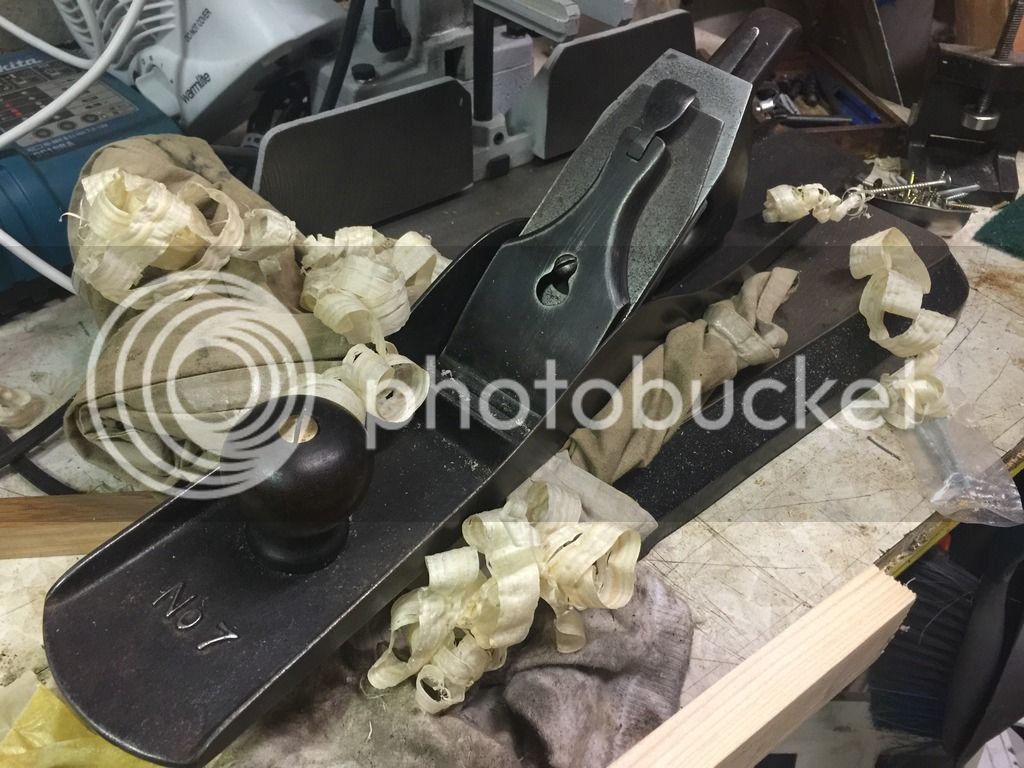memzey
Established Member
Ooer missus 
Say hello to my new to me Stanley No. 7:

It is a post 1888, pre 1902 jointer and a lovely piece of kit if I do say so myself! Now this is not supposed to be a gloat thread as such rather a call for some advice: does anyone know where I can get my hands on a high quality, thin Stanley style iron for this plane by any chance? The iron that came with it is quite pitted, I don't have much confidence in Stanley's current offerings and all the other supposedly premium irons seem to be of the thick variety. As I sharpen freehand on oil stones I don't want to mess about with removing more material than is necessary and I have no intention of filing the mouth to fit a thicker iron anyway. Any advice of the non-sharpening variety gladly received!
Thanks in advance!
Say hello to my new to me Stanley No. 7:

It is a post 1888, pre 1902 jointer and a lovely piece of kit if I do say so myself! Now this is not supposed to be a gloat thread as such rather a call for some advice: does anyone know where I can get my hands on a high quality, thin Stanley style iron for this plane by any chance? The iron that came with it is quite pitted, I don't have much confidence in Stanley's current offerings and all the other supposedly premium irons seem to be of the thick variety. As I sharpen freehand on oil stones I don't want to mess about with removing more material than is necessary and I have no intention of filing the mouth to fit a thicker iron anyway. Any advice of the non-sharpening variety gladly received!
Thanks in advance!




